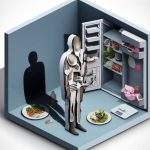Experiencing a loose tooth as an adult can be alarming. While loose teeth are a natural part of childhood, a wobbly adult tooth suggests an underlying issue requiring attention. This comprehensive guide explores the stages of loose adult teeth, potential causes, treatment options, and preventive strategies to maintain a healthy smile.
Understanding Loose Tooth Stages in Adults
A loose adult tooth typically progresses through distinct stages, each with varying degrees of mobility and potential complications. Recognizing these stages is crucial for timely intervention.
Stage 1: A Subtle Shift (Slightly Loose)
In Stage 1, the tooth exhibits minimal movement, often only detectable by a dentist during a check-up or through gentle self-examination. You might notice a barely perceptible wobble or a subtle shift when touching the tooth with your tongue. There might not be pain or discomfort at this stage. Stage 1 tooth mobility, often reversible with prompt treatment, acts as an early warning sign. swollen roof of mouth can sometimes accompany a loose tooth.
Stage 2: Noticeably Loose
Stage 2 involves increased movement, making the looseness more apparent. You’ll probably experience discomfort or pain, especially when eating or brushing. Biting into firm foods might cause a twinge. Prompt dental attention is essential in this stage to prevent further progression.
Stage 3: Significant Mobility (Very Loose)
Stage 3 signifies severe loosening, with the tooth exhibiting significant movement in all directions, including vertically. Pain and discomfort are likely, impacting daily activities like eating and speaking. At this stage, the tooth may feel like it’s about to fall out and carries a high risk of loss. Immediate dental intervention is crucial.
What Causes Loose Adult Teeth?
Several factors can contribute to loose adult teeth, the most common being gum disease.
Gum Disease (Periodontal Disease)
This is the leading cause of tooth loss in adults. Gum disease is an infection affecting the gums and bone that support your teeth. As the infection progresses, it weakens these supporting structures, causing teeth to loosen.
Trauma
A blow to the mouth from a fall, sports injury, or accident can damage the ligaments and bone holding teeth in place, resulting in looseness.
Bruxism (Teeth Grinding)
The constant pressure from grinding or clenching your teeth, particularly during sleep, can weaken supporting structures over time and lead to loose teeth.
Other Contributing Factors
Other factors, such as infections near the teeth, osteoporosis, hormonal changes, and certain medications, might also contribute to tooth mobility. It’s important to note that ongoing research suggests possible genetic factors might play a role, though further study is needed.
Treatment Options for Loose Teeth
Treatment for a loose tooth depends on the underlying cause and the stage of mobility. Your dentist will evaluate your specific situation and recommend the most appropriate course of action.
Improving Oral Hygiene
For early-stage gum disease, improving oral hygiene might suffice. This involves brushing twice daily with fluoride toothpaste, flossing daily, and using an antimicrobial mouthwash.
Medication
If an infection is present, antibiotics or antimicrobial mouth rinses can help combat the bacteria. If you are undergoing root canal treatment and are worried about side effects, side effects of rct should be your concern.
Root Canal Therapy
If the infection reaches the tooth’s pulp, a root canal procedure can remove the infected tissue, preserve the tooth, and prevent further loosening.
Gum Grafts
This procedure involves adding tissue to areas where the gums have receded, strengthening support around loose teeth.
Splinting
Splinting involves connecting the loose tooth to adjacent, more stable teeth with a thin wire or other material to provide stability and distribute biting forces.
Dental Implants
If a tooth is lost, dental implants provide a permanent replacement option. These implants are surgically placed in the jawbone and topped with a crown to restore function and aesthetics.
Preventing Loose Adult Teeth
Preventing loose teeth is always the best approach. Here are some preventive measures:
Maintain Excellent Oral Hygiene
Brush and floss diligently twice a day to remove plaque and prevent gum disease.
Regular Dental Check-ups
Regular dental visits allow for early detection and treatment of potential problems before they escalate.
Wear a Nightguard
If you grind your teeth, a nightguard protects them from excessive wear and tear.
Avoid Hard Objects
Refrain from chewing on ice, hard candies, or other hard objects that can damage your teeth.
Quit Smoking
Smoking weakens the immune system, making you more susceptible to gum disease.
How Long Does a Loose Tooth Take to Fall Out in Adults?
The timeframe for a loose tooth to fall out in adults varies significantly depending on the cause and individual factors. Mild gum inflammation might resolve within weeks with proper care, while severe gum disease, trauma, or infection can prolong the process or necessitate dental intervention. Consulting your dentist is crucial for determining the cause and expected timeline.
| Cause | Likely Timeline | Professional Help? |
|---|---|---|
| Mild Gum Irritation | A few weeks with good oral hygiene | Probably not, but consult if unsure |
| Advanced Gum Disease | Varies, often longer; ongoing management | Definitely |
| Trauma | Varies depending on severity | Likely |
| Infection | Varies depending on the infection type | Definitely |
Expert Insight
Dr. KODALI RAGA SRI SAI MALIK (Dentist – 2.6 years of exp): “Common causes of loose teeth can be gum diseases, periodontal diseases, infections beneath the teeth, cyst or granuloma affecting the teeth, or trauma to the teeth. But the most common cause can be gum diseases due to poor oral hygiene, where calculus formation could be there around the tooth which affects the gums, bone, and loosens the teeth. And also gum infection or periodontal infections are the more common causes of loose teeth.”
This information provides a general overview. Always consult with a dental professional for personalized advice and treatment. Dental research constantly evolves, and treatment approaches might change with new discoveries. Your dentist is the best resource for accurate diagnosis and the most current care.
- Weight Loss Supplements That Work and Those That Dont - October 31, 2025
- Male Eating Disorders Often Missed but Increasingly Prevalent - October 29, 2025
- Males With Anorexia Nervosa Have Distinct Symptoms and Treatment Needs - October 28, 2025










